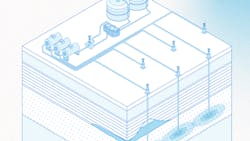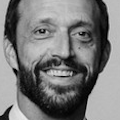Occidental inks deal for Louisiana CCS hub
Executives with Occidental Petroleum Corp., Houston, have signed an agreement with peers at timberlands titan Weyerhaeuser Co., Seattle, that gives Occidental’s Oxy Low Carbon Ventures division (OLCV) the right to build and operate a carbon sequestration (CCS) hub under Louisiana land owned by Weyerhaeuser.
Per the deal, Occidental is evaluating the prospects for a carbon capture operation that would permanently house industrial CO2 in geologic formations under more than 30,000 acres controlled by Weyerhaeuser and not associated with oil and gas production. Weyerhaeuser will continue to manage the above-ground land in Livingston Parish, east of Baton Rouge, as a working forest.
Occidental executives have voiced their ambition to build a business that not only manages, stores, and/or repurposes the company’s own emissions but also provides a platform for other emitters—such as factories or power plants—to capture and remove theirs. Noting that they are developing better processes and more efficient technologies while several large companies are adopting emission-reduction policies and various policy makers around the world are incentivizing the transition, they see a big market taking shape with solid economic underpinnings.
“The next few years will be critical to help determine the ultimate pace of deployment,” Richard Jackson, chairman of OLCV’s 1PointFive unit, said at a company presentation to analysts last week. “We’ll be prepared to deliver.”
At the presentation, President and Chief Executive Officer Vicki Hollub said those efforts have the potential to “ultimately create more value […] for Oxy than our chemicals business [because] there is going to be a significant and growing voluntary market here.” (Occidental’s chemicals group last year generated more than $1.5 billion in operating earnings on sales of more than $5.2 billion.) The company’s leaders plan to spend up to $300 million this year, with $175 million of that going to their first direct air capture plant (which will eventually cost $800 million to $1 billion to complete) and $100 million allocated to the sequestration hub. Future capex plans, Hollub added, will be evaluated and sketched out as the market develops.
The Livingston Parish agreement, which could grow to include other Weyerhaeuser land, is a step toward Occidental’s long-term plans to build a group of sequestration hubs in the Gulf Coast region and elsewhere in the United States. The overall goal is for the company to be net zero in its overall use of carbon by 2050—with scope 1 and 2 emissions being net zero by 2040—and the plan includes a number of direct air capture facilities.
At the company’s presentation last week, Jackson said the carbon capture, utilization, and storage (CCUS) market is still very much evolving but added that his team is planning to build 70 direct air capture plants by 2035. That, the company thinks, will represent a mere 2% of the expected total market of 5,000 million tons/year of CO2, however.
Shares of Occidental (Ticker: OXY) were down about 3% in afternoon trading Mar. 28. They are still changing hands at nearly double their value 6 months ago.
About the Author
Geert De Lombaerde
Senior Editor
A native of Belgium, Geert De Lombaerde has more than two decades of business journalism experience and writes about markets and economic trends for Endeavor Business Media publications Healthcare Innovation, IndustryWeek, FleetOwner, Oil & Gas Journal and T&D World. With a degree in journalism from the University of Missouri, he began his reporting career at the Business Courier in Cincinnati and later was managing editor and editor of the Nashville Business Journal. Most recently, he oversaw the online and print products of the Nashville Post and reported primarily on Middle Tennessee’s finance sector as well as many of its publicly traded companies.

